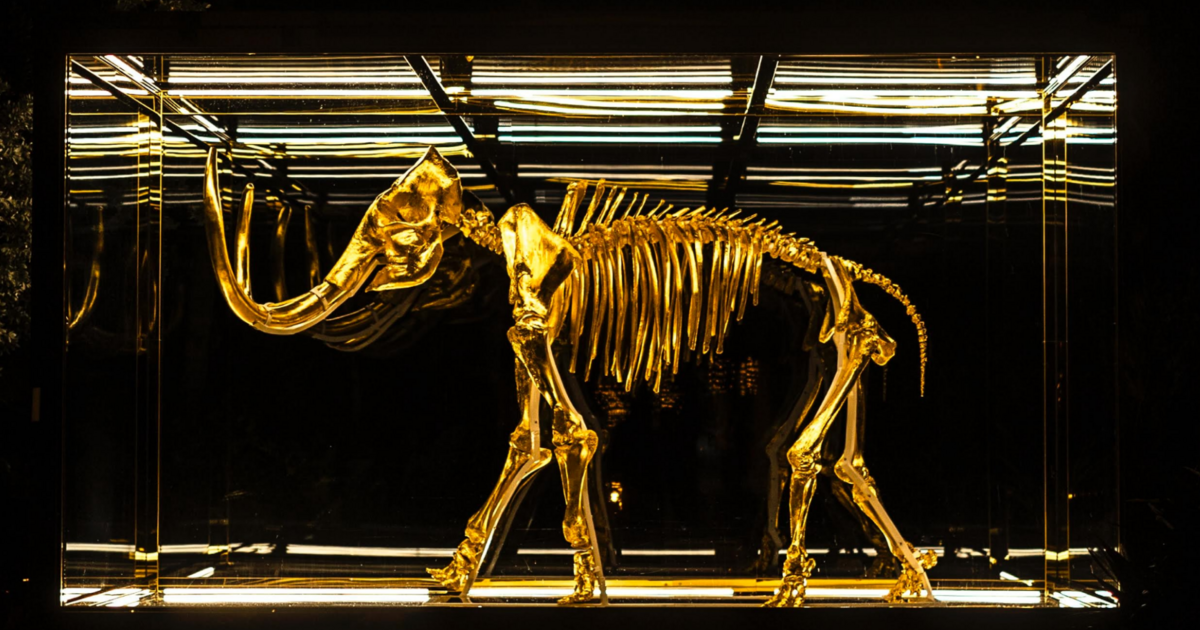p4bl0p3rn0t<p><a href="https://toot.portes-imaginaire.org/tags/spinal" class="mention hashtag" rel="nofollow noopener noreferrer" target="_blank">#<span>spinal</span></a> <a href="https://toot.portes-imaginaire.org/tags/tap" class="mention hashtag" rel="nofollow noopener noreferrer" target="_blank">#<span>tap</span></a> 2 , 12 septembre 2025 !!!!</p>
Recherches récentes
Aucune recherche récente
Options de recherche
Disponible uniquement lorsque vous êtes connecté.
mastouille.fr est l'un des nombreux serveurs Mastodon indépendants que vous pouvez utiliser pour participer au fédiverse.

Mastouille est une instance Mastodon durable, ouverte, et hébergée en France.
Administré par :
Statistiques du serveur :
586comptes actifs
mastouille.fr: À propos · Annuaire des profils · Politique de confidentialité
Mastodon: À propos · Télécharger l’application · Raccourcis clavier · Voir le code source · v4.3.4
#spinal
0 message · 0 participant · 0 message aujourd’hui
Susan Larson ♀️🏳️🌈🏳️⚧️🌈<p>A painful <a href="https://mastodon.online/tags/spinal" class="mention hashtag" rel="nofollow noopener noreferrer" target="_blank">#<span>spinal</span></a> <a href="https://mastodon.online/tags/surgery" class="mention hashtag" rel="nofollow noopener noreferrer" target="_blank">#<span>surgery</span></a> <a href="https://mastodon.online/tags/upended" class="mention hashtag" rel="nofollow noopener noreferrer" target="_blank">#<span>upended</span></a> <a href="https://mastodon.online/tags/suspect" class="mention hashtag" rel="nofollow noopener noreferrer" target="_blank">#<span>suspect</span></a> <a href="https://mastodon.online/tags/LuigiMangione" class="mention hashtag" rel="nofollow noopener noreferrer" target="_blank">#<span>LuigiMangione</span></a>’s <a href="https://mastodon.online/tags/life" class="mention hashtag" rel="nofollow noopener noreferrer" target="_blank">#<span>life</span></a> prior to <a href="https://mastodon.online/tags/arrest" class="mention hashtag" rel="nofollow noopener noreferrer" target="_blank">#<span>arrest</span></a> for <a href="https://mastodon.online/tags/UnitedHealthcare" class="mention hashtag" rel="nofollow noopener noreferrer" target="_blank">#<span>UnitedHealthcare</span></a> <a href="https://mastodon.online/tags/CEO" class="mention hashtag" rel="nofollow noopener noreferrer" target="_blank">#<span>CEO</span></a> <a href="https://mastodon.online/tags/shooting" class="mention hashtag" rel="nofollow noopener noreferrer" target="_blank">#<span>shooting</span></a> </p><p><a href="https://fortune.com/2024/12/10/luigi-mangione-brian-thompson-united-health-spinal-surgery/" rel="nofollow noopener noreferrer" translate="no" target="_blank"><span class="invisible">https://</span><span class="ellipsis">fortune.com/2024/12/10/luigi-m</span><span class="invisible">angione-brian-thompson-united-health-spinal-surgery/</span></a></p>
Matt Willemsen<p>Electric pulses may ease paralysis after broken neck<br><a href="https://www.bbc.com/news/articles/c4n1g7dr48go" rel="nofollow noopener noreferrer" translate="no" target="_blank"><span class="invisible">https://www.</span><span class="ellipsis">bbc.com/news/articles/c4n1g7dr</span><span class="invisible">48go</span></a> <a href="https://mastodon.social/tags/medicine" class="mention hashtag" rel="nofollow noopener noreferrer" target="_blank">#<span>medicine</span></a> <a href="https://mastodon.social/tags/paralysis" class="mention hashtag" rel="nofollow noopener noreferrer" target="_blank">#<span>paralysis</span></a> <a href="https://mastodon.social/tags/ElectricPulses" class="mention hashtag" rel="nofollow noopener noreferrer" target="_blank">#<span>ElectricPulses</span></a> <a href="https://mastodon.social/tags/spinal" class="mention hashtag" rel="nofollow noopener noreferrer" target="_blank">#<span>spinal</span></a> <a href="https://mastodon.social/tags/injury" class="mention hashtag" rel="nofollow noopener noreferrer" target="_blank">#<span>injury</span></a></p>
PhoenixSerenity<p>A <a href="https://mastodon.sdf.org/tags/LondonOntario" class="mention hashtag" rel="nofollow noopener noreferrer" target="_blank">#<span>LondonOntario</span></a> man has become the <a href="https://mastodon.sdf.org/tags/first" class="mention hashtag" rel="nofollow noopener noreferrer" target="_blank">#<span>first</span></a> person in <a href="https://mastodon.sdf.org/tags/Canada" class="mention hashtag" rel="nofollow noopener noreferrer" target="_blank">#<span>Canada</span></a> to receive a <a href="https://mastodon.sdf.org/tags/RoboticAssisted" class="mention hashtag" rel="nofollow noopener noreferrer" target="_blank">#<span>RoboticAssisted</span></a> <a href="https://mastodon.sdf.org/tags/surgery" class="mention hashtag" rel="nofollow noopener noreferrer" target="_blank">#<span>surgery</span></a> on his <a href="https://mastodon.sdf.org/tags/spine" class="mention hashtag" rel="nofollow noopener noreferrer" target="_blank">#<span>spine</span></a>.</p><p>Dave Myeh suffered from debilitating, chronic back pain that led to sciatica in his right leg and extreme pain in his lower back.</p><p>He went to London Health Sciences Centre and became the first patient in Canada to receive a surgery called a direct lateral spine surgery, using the <a href="https://mastodon.sdf.org/tags/MazorX" class="mention hashtag" rel="nofollow noopener noreferrer" target="_blank">#<span>MazorX</span></a> <a href="https://mastodon.sdf.org/tags/Spinal" class="mention hashtag" rel="nofollow noopener noreferrer" target="_blank">#<span>Spinal</span></a> <a href="https://mastodon.sdf.org/tags/Robot" class="mention hashtag" rel="nofollow noopener noreferrer" target="_blank">#<span>Robot</span></a>. </p><p><a href="https://london.ctvnews.ca/first-in-canada-procedure-performed-at-london-ont-hospital-1.6861513" rel="nofollow noopener noreferrer" target="_blank"><span class="invisible">https://</span><span class="ellipsis">london.ctvnews.ca/first-in-can</span><span class="invisible">ada-procedure-performed-at-london-ont-hospital-1.6861513</span></a></p><p><a href="https://mastodon.sdf.org/tags/Medical" class="mention hashtag" rel="nofollow noopener noreferrer" target="_blank">#<span>Medical</span></a></p>
Scientific Frontline<p><a href="https://mastodon.social/tags/Neurons" class="mention hashtag" rel="nofollow noopener noreferrer" target="_blank">#<span>Neurons</span></a>, the main cells that make up our <a href="https://mastodon.social/tags/brain" class="mention hashtag" rel="nofollow noopener noreferrer" target="_blank">#<span>brain</span></a> and <a href="https://mastodon.social/tags/spinal" class="mention hashtag" rel="nofollow noopener noreferrer" target="_blank">#<span>spinal</span></a> cord, are among the slowest cells to regenerate after an injury, and many neurons fail to regenerate entirely. While scientists have made progress in understanding neuronal regeneration, it remains unknown why some neurons regenerate and others do not. <br><a href="https://mastodon.social/tags/Neuroscience" class="mention hashtag" rel="nofollow noopener noreferrer" target="_blank">#<span>Neuroscience</span></a> <a href="https://mastodon.social/tags/sflorg" class="mention hashtag" rel="nofollow noopener noreferrer" target="_blank">#<span>sflorg</span></a><br><a href="https://www.sflorg.com/2023/10/ns10162302.html" rel="nofollow noopener noreferrer" translate="no" target="_blank"><span class="invisible">https://www.</span><span class="ellipsis">sflorg.com/2023/10/ns10162302.</span><span class="invisible">html</span></a></p>
LeMotLeJeu 🟧<p><a href="https://mastodon.top/tags/LeMOT6" class="mention hashtag" rel="nofollow noopener noreferrer" target="_blank">#<span>LeMOT6</span></a> #272 - 1719 parties jouées</p><p>1: 0%<br>2: 🟠 3%<br>3: 🟠🟠🟠🟠🟠 19%<br>4: 🟠🟠🟠🟠🟠🟠🟠🟠🟠 34%<br>5: 🟠🟠🟠🟠🟠🟠🟠 27%<br>6: 🟠🟠🟠 10%<br>X: 🟠🟠 7%</p><p><a href="https://mastodon.top/tags/Spinal" class="mention hashtag" rel="nofollow noopener noreferrer" target="_blank">#<span>Spinal</span></a></p>
ExplorerFlux en direct
Mastodon est le meilleur moyen de suivre ce qui se passe.
Suivez n'importe qui à travers le fédivers et affichez tout dans un ordre chronologique. Ni algorithmes, ni publicités, ni appâts à clics en perspective.
Créer un compteSe connecterGlissez et déposez pour envoyer
